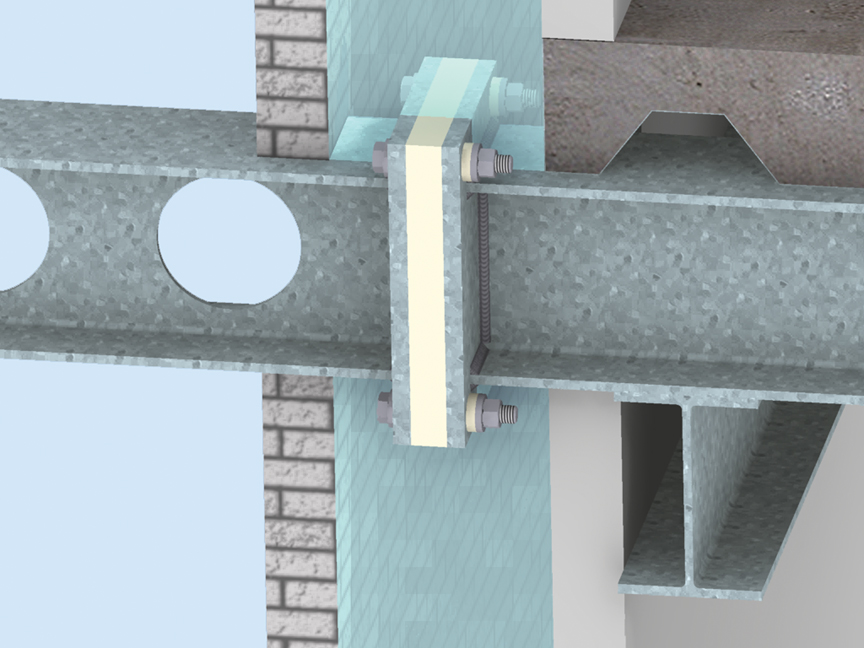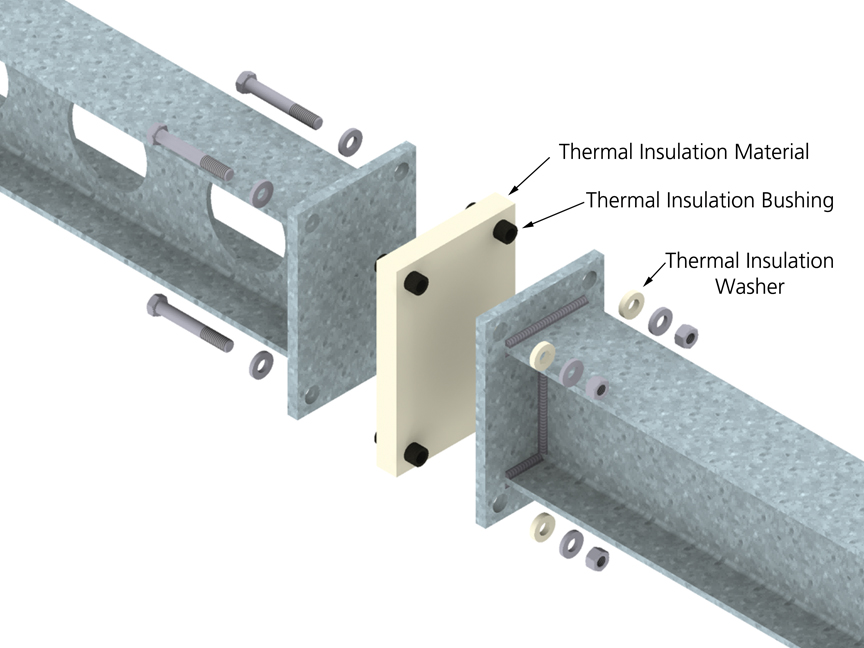Blog Post
Structural Thermal Breaks for Steel Framing

Steel beams are a prime pathway for transferring heat and cold in and out of buildings. This thermal bridging not only wastes energy, but can also cause condensation, corrosion, mold, and other indoor air quality problems. To combat these problems, Fabreeka International, maker of vibration and shock control systems, recently began offering its Thermal Insulation Material (TIM) as a structural thermal break in steel framing.
There's a reason cooking pans are made from steel
Energy as heat moves from areas of high to low temperatures through convection, radiation, or conduction. In solid building materials like steel, the energy is transferred very efficiently through the material via conduction. Most construction materials provide some resistance to this heat transfer (the R-value of wood is about 1.3 while insulation ranges from about 3.5 to 7.2) but steel, at roughly R-0.003, works more like a heat sink, pulling heat out of, or into, buildings. (See our BackPage Primer on thermal bridging.)
The importance of insulating steel construction is no secret; and continuous insulation--insulation with no thermal bridges along the exterior of steel-framed buildings--is now required by some building codes, but what happens when the steel beams penetrate the building envelope? According to Robert Haley, engineering manager at Fabreeka International, a steel or concrete balcony significantly increases heat transfer, and this temperature difference leads to condensation and other building problems. (Schoeck's Isokorb system acts as a thermal break in cantilevered concrete slabs and the company has a similar product for steel beams; see more in GreenSpec or Product of the Week Blog.

It's a thermal break...
Made from a fiberglass-reinforced composite, Fabreeka International's Thermal Insulation Material (TIM) does not have the thermal resistance of pure insulation materials, but its per-inch R-value of about 0.6 (BTU/Hr/ft2/in/°F = 1.8), is far superior to steel (R-0.003) or concrete (R-0.08), providing a structural thermal break between flanged steel framing members.
And it can support loads
As mentioned, there are a lot of insulating materials available, but few that are capable of structural support. There are a number of variables that impact a material's structural performance, of course, but Haley says, "the compressive strength of our thermal material is 38,900 PSI where A36 steel is 36,000 PSI." He continued, "The connection is up to the structural engineer, but the TIM material properties were chosen so that the structural integrity of the connection will not be compromised."
TIM has other applications beyond balconies
The performance of the material depends on thickness, of course, but Haley said TIM is particularly effective when used between materials with large temperature differences, such as "machinery and industrial applications where very high or very low temperatures are connected to an area where these extremes are not desired." But, he cautioned it has limits, and should be used in applications between –60°F and 260°F, though the material has been tested for UL 723 test for flame spread/smoke density, ASTM D229 for flame resistance, and ASTM E 1354 for heat release and ignition time.
SUPPORT INDEPENDENT SUSTAINABILITY REPORTING
BuildingGreen relies on our premium members, not on advertisers. Help make our work possible.
See membership options »TIM is available in ¼"-, ½"-, and 1"-thick sheets or as thermal break washers, but it can also be cut to custom dimensions. Because the product is new, the company does not have any performance feedback from customers, but we will keep in contact and update this information as soon as it is available.
Brent Ehrlich is the products editor at BuildingGreen, Inc.
Published June 30, 2011 Permalink Citation
(2011, June 30). Structural Thermal Breaks for Steel Framing. Retrieved from https://www.buildinggreen.com/blog/structural-thermal-breaks-steel-framing



Add new comment
To post a comment, you need to register for a BuildingGreen Basic membership (free) or login to your existing profile.